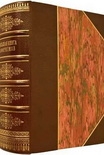Nature Noir, Jordan Smith [early reader chapter books .txt] 📗

- Author: Jordan Smith
Book online «Nature Noir, Jordan Smith [early reader chapter books .txt] 📗». Author Jordan Smith
That winter, as usual, Rouse's car stayed out in the snow. Never one to stop working when he clocked out, Rouse had converted his garage into a home office. For years he'd been excusing himself each evening after dinner to go out there and work on the Bureau's calculations late into the night, and his retirement didn't change that. For the next year and a half, Rouse kept going over the figures for Auburn. And he ordered up some letterhead: George C. Rouse, Structural Engineer.
In February 1974, Rouse typed a letter on that stationery to Harold G. Arthur, the Bureau's director of design and construction at the Denver Service Center. In reasoned, unemotional prose backed with fifteen peer-reviewed references, Rouse refuted the Bureau's whole rationale for the seismic safety of Auburn Dam. Using the agency's own numbers, he derived that the dam could be expected to crack within the first seven seconds of a bad earthquake. He also differed with the Bureau on what he considered its wild optimism on the strength of its concrete, and further—and this turned out to be the most lethal to the agency's credibility—on whether an earthquake could happen closer than fifty miles from the dam site. The Bureau had dismissed that possibility, but Rouse thought it ought to be planned for, because dams last a lot longer than geological opinions. In a later letter he reminded Arthur that people had lived around Koyna, India, for a long time, so there existed a written and oral tradition of what had happened there for the last four hundred years. Nowhere in that tradition was there a legend of anything like the earthquake that had cracked the Koyna Dam and killed 177 residents of nearby villages. Could the Bureau really be so sure that the faults around Auburn would not behave similarly when the dam was filled?
It would bother Rouse for years that he helped the environmentalists, because he disagreed with the Bureau not about dams in general—he loved them, they were his life—but about what he saw as sloppy engineering, with the lives of thousands downstream at stake. Nevertheless, his timing was fortuitous for environmental groups. California had only recently had a wakeup call: two years before, the San Fernando Valley north of Los Angeles was shaken by an earthquake that killed fifty-eight people, damaged thirty thousand buildings, and caused the crest of the Van Norman Dam above the densely urbanized valley to collapse. The dam didn't fail entirely, but its perilous condition caused the evacuation of eighty thousand residents, and thereafter seismic risk had become the darling of environmentalists fighting large engineered structures. They used it against the Diablo Canyon Nuclear Plant on California's central coast, although unsuccessfully, and once the Rouse letters found their way into their hands, they used it against Auburn. What would make Rouse's assertions most damaging was that he was so soon to be proven right. A little over a year after his first letter, the Oroville earthquake shook the supposedly inactive Foothill Faults beneath Oroville Dam.
For the Bureau of Reclamation, the following year, 1976, was a low point. Even as it defended the design of Auburn Dam after the Oroville earthquake, the agency was filling another new dam in Idaho. The 305-foot earth-fill Teton Dam had been completed on the river of the same name the previous fall, and like Auburn's, the rocks underneath it were suspect. During construction the Bureau poured over five hundred thousand yards of concrete into the underlying rocks to keep water from seeping through cracks and voids in them and liquefying the earth of the dam. Teton filled quickly with runoff the following spring, and on June 5, 1976, at five minutes to noon, the structure failed, unleashing a torrent that destroyed several ranches and much of the town of Rexburg, Idaho, downstream. Remarkably, only eleven people died.
In the aftermath of the Teton Dam collapse and the Oroville earthquake, the Bureau of Reclamation was well on its way to becoming the most controversial federal agency since the CIA. Later that year Jimmy Carter was elected president, and he went to the White House with a list of expensive federal projects he had promised to kill. One of them was Auburn. He was eventually forced to soften his position, and by the end of his term Auburn still had a budget and was being redesigned for greater seismic safety. Design work continued into the eighties as the Bureau sought money to begin construction again. Meanwhile, the diversion tunnel, the cofferdam, and the big bridge lived a longer and stranger life in limbo than their designers could have ever imagined.
After moving the dead man's pickup, I walked to the rail of the pedestrian walkway and looked over the edge. Beneath me the bridge's green steel trusses were in shadow. A car crossed the span behind me, and the clanks of the expansion joints startled a flock of pigeons from their roost underneath it. They veered out over the canyon as one, wheeled, and disappeared back under the bridge.
The body lay face-down below, where the canyon side had been bulldozed to subsoil and rock when the bridge was built and still nothing grew. There was a scuff on the soil just uphill of the corpse where the man had hit and bounced. He had come to rest with one of his legs twisted underneath him. There was a rent in his blue chambray work shirt at the middle of his back through which his intestines had exploded. They were splayed out on the ground around him.
The coroner's deputies arrived to collect him.





Comments (0)